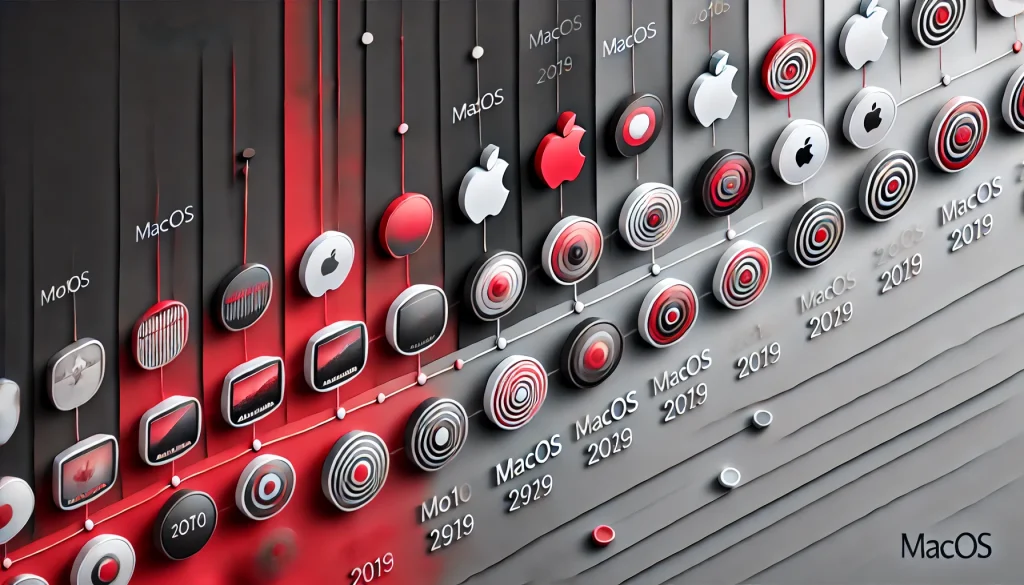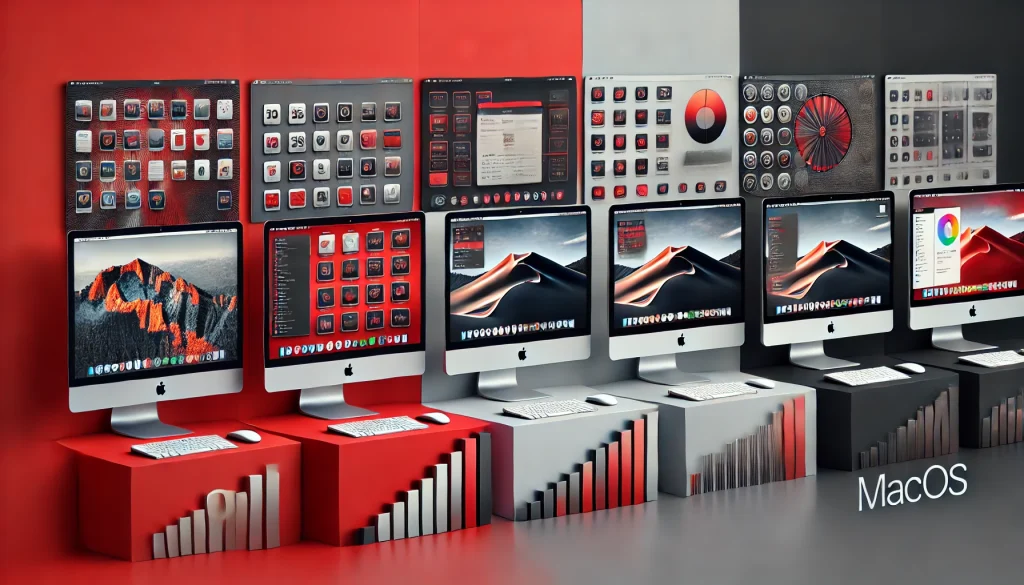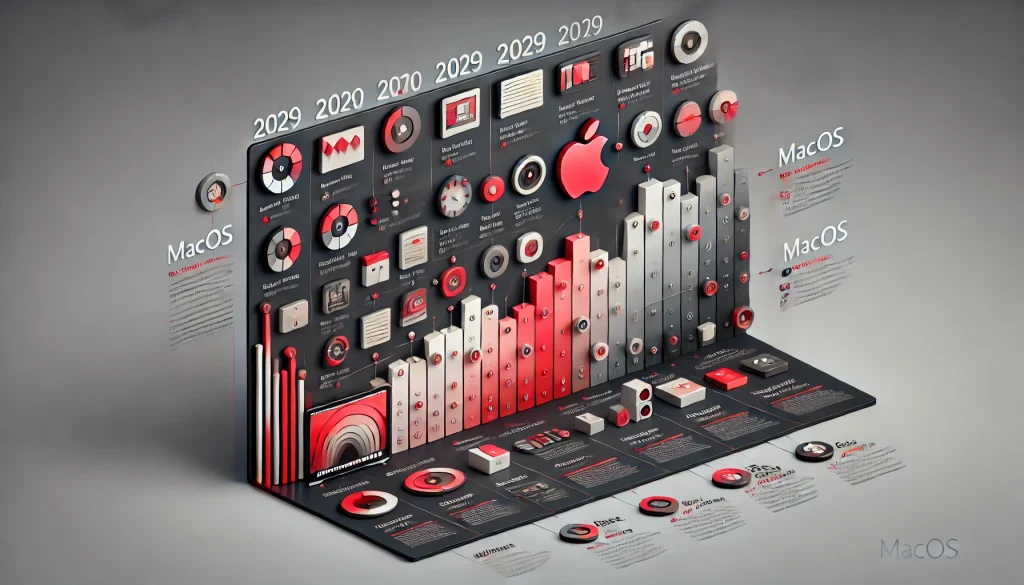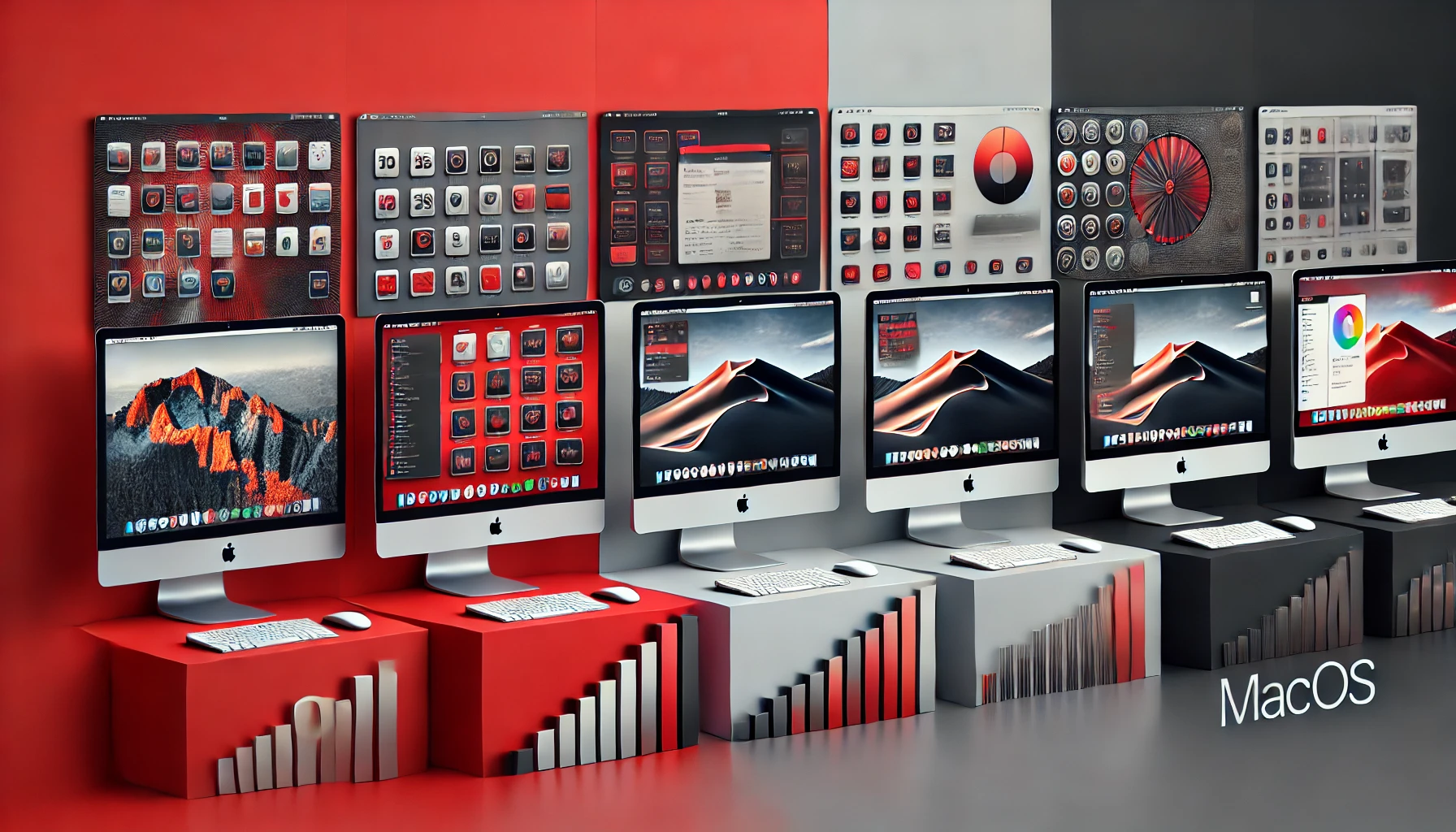
Apple’s macOS has become a pillar in the tech industry, offering a seamless blend of functionality, style, and security. macOS version history highlights OS evolution and broader technology advancements across the years. Each iteration introduced features impacting industry professionals and users, solidifying Apple’s modern computing leadership. Understanding macOS progression offers insight into tech advancements powering Macs and Apple’s adaptive innovations.
macOS Version History: Key Milestones and Highlights
Apple’s journey with macOS started in 2001, building on the foundation of earlier operating systems like Mac OS 9. Focusing on user-friendly design and high functionality, each macOS version introduced improvements for developers, creatives, and everyday users. This macOS version list highlights pivotal changes and tech trends that make macOS one of the most advanced operating systems today.
macOS X 10.0 Cheetah (2001)
The journey of macOS began with macOS X Cheetah in 2001. Known for its sleek Aqua interface, this OS was visually transformative, introducing a striking new look with translucent blue scroll bars, rounded buttons, and an overall more polished feel. However, Cheetah had performance limitations, making it more of a preview of Apple’s vision than a fully optimized OS.
macOS X 10.2 Jaguar (2002)
Jaguar arrived with a focus on improved performance, addressing some of the speed issues seen in earlier versions. The addition of Quartz Extreme graphics accelerated user interface performance significantly. Jaguar also introduced Inkwell, allowing users to write on the screen with a stylus, which was innovative at the time.
macOS X 10.4 Tiger (2005)
Tiger marked a major leap in macOS history with Spotlight, a powerful new search feature, and Dashboard, which introduced widgets for productivity. Notably, Tiger was the first macOS version to support Intel-based Macs, marking Apple’s pivotal transition from PowerPC chips in its OS evolution.
macOS X 10.5 Leopard (2007)
Leopard added over 300 features, including the Time Machine backup utility, an advanced Finder with Cover Flow, and an updated Dock with Stacks. It was the first macOS version to support 64-bit applications, preparing developers and users for the future of high-performance applications.
macOS X 10.7 Lion (2011)
As mobile technology advanced, Lion adopted features reminiscent of the iOS experience, such as Launchpad, which brought app icons to the forefront, and natural scrolling. Lion also introduced AirDrop for easy file sharing, reflecting Apple’s commitment to integrating device connectivity into its OS.
macOS X 10.9 Mavericks (2013)
Apple broke its tradition of big cat names with Mavericks, named after a surfing location in California. This macOS version focused on performance optimization and power efficiency, introducing features like Finder tabs, tags, and better support for multiple displays. It also made macOS updates free, a groundbreaking change in Apple’s OS strategy.
macOS 10.12 Sierra (2016)
With Sierra, macOS officially dropped the “X” in its naming, transitioning to macOS version numbering. Sierra introduced Siri to the Mac, bridging the gap between mobile and desktop. It also brought in features like Optimized Storage and Apple Pay on Safari, aligning macOS more closely with Apple’s ecosystem of products.
macOS 10.14 Mojave (2018)
Mojave was known for its introduction of Dark Mode, a highly requested feature that minimized eye strain and highlighted content beautifully in low-light conditions. This macOS version also added Dynamic Desktop, which adapted the display according to the time of day, along with increased security measures for data privacy.
macOS 10.15 Catalina (2019)
Catalina split iTunes into three distinct apps—Music, Podcasts, and TV—reflecting the diversity of Apple’s media services. Sidecar was also introduced, allowing users to use an iPad as a second display, which became invaluable for professionals needing a mobile dual-monitor setup.
macOS 11 Big Sur (2020)
Big Sur was a visual overhaul, aligning with Apple’s transition to M1 silicon chips. It introduced a modern, refined design with a revamped Notification Center, and it marked the biggest UI change since the Aqua interface. The transition to M1 chips allowed for enhanced performance and efficiency, creating an ideal OS for powerful, energy-efficient devices.
macOS 12 Monterey (2021)
macOS Monterey built on Big Sur’s foundation with Universal Control, allowing users to move seamlessly between Macs and iPads with a single mouse and keyboard. Monterey also emphasized privacy improvements with features like Mail Privacy Protection, reinforcing Apple’s stance on user data security.
macOS 13 Ventura (2022)
With Ventura, Apple introduced Stage Manager, enhancing window management for better multitasking. Ventura also brought updates to Spotlight, making it more intuitive and powerful, while Mail and Safari saw major upgrades, cementing Ventura as a productivity powerhouse for modern professionals.
Current macOS Version: macOS 14 Sonoma (2023)
Sonoma, the latest macOS version, embraces an immersive experience with enhanced support for widgets, further bridging the gap between macOS and iOS functionality. It introduces a Game Mode, optimized for gaming performance, making macOS more versatile than ever before. With this release, Apple continues to innovate, tailoring each version to the needs of its users in an increasingly tech-centric world.
The Impact of macOS Evolution on Modern Technology

The macOS version history isn’t just a story of Apple’s operating systems—it’s a reflection of how technology has evolved. From Cheetah to Sonoma, Apple has consistently delivered features that set industry standards. Each macOS update integrates advanced tools, productivity aids, and enhanced performance, catering to everyday users, professional developers, and creatives alike.
Future of macOS Versions: What’s Next?

As Apple invests further in M-series chips, the future of macOS versions promises even greater synergy between hardware and software. As interest in augmented reality, artificial intelligence, and mobile-desktop connectivity grows, macOS will likely integrate more of these emerging tech trends. Experts predict powerful tools, enhanced data privacy, and expanded productivity features, reinforcing Apple’s position as a tech innovation leader.
Conclusion
In conclusion, the macOS version history reflects Apple’s enduring commitment to innovation, user-centered design, and high performance. From the launch of macOS X Cheetah to the latest macOS Sonoma, each macOS version has introduced groundbreaking features that meet the evolving demands of modern computing, whether for industry professionals, developers, or everyday users. The transition to M-series chips has further accelerated macOS’s evolution, promising an even more seamless integration between software and hardware.
Looking ahead, Apple’s commitment to privacy, productivity, and AI-driven technology indicates that future macOS versions will keep redefining desktop computing. As users and professionals worldwide await the next release, it’s clear that Apple’s operating system remains a vital force, continuously setting new standards for performance, functionality, and user experience.
FAQ
What is the latest macOS version?
The latest macOS version is macOS 14 Sonoma, which was released in 2023 and introduced features like Game Mode and enhanced widget support.
How often does Apple release new macOS versions?
Apple typically releases a new macOS version annually, introducing incremental improvements and new features with each update.
What are the major differences between macOS Big Sur and macOS Monterey?
Monterey added Universal Control, better privacy features, and improvements to FaceTime, making it a more integrated, privacy-focused OS compared to Big Sur.
Resources
- Beebom. All macOS Versions in Order.
- Gkgigs. List of All macOS Version History.
- Macworld. List of All macOS Versions Including the Latest macOS.
- Setapp. Full List of All macOS Versions.
- TechTerms. macOS Version List.

Brijesh Gohil is the founder of Tech Brij, A popular Tech Blog which is focused on Tech tips & Buying Guides. You can follow him on Facebook, Twitter, Google + & LinkedIn.

